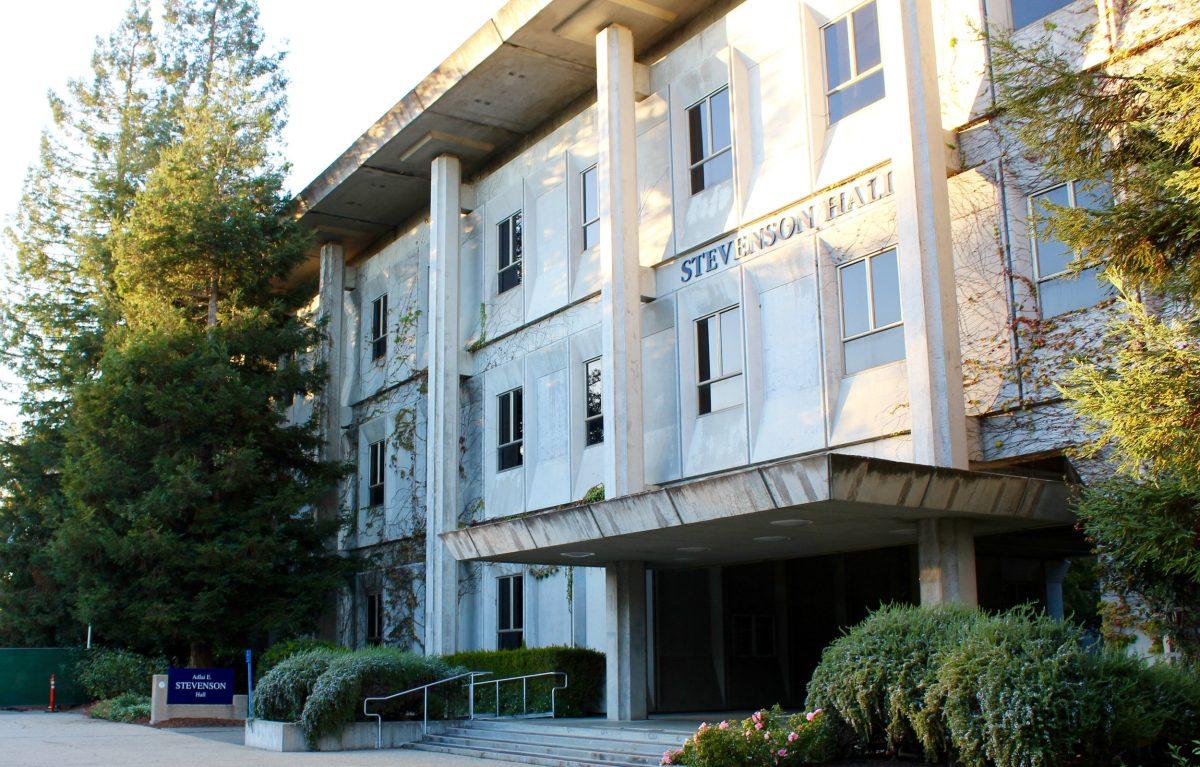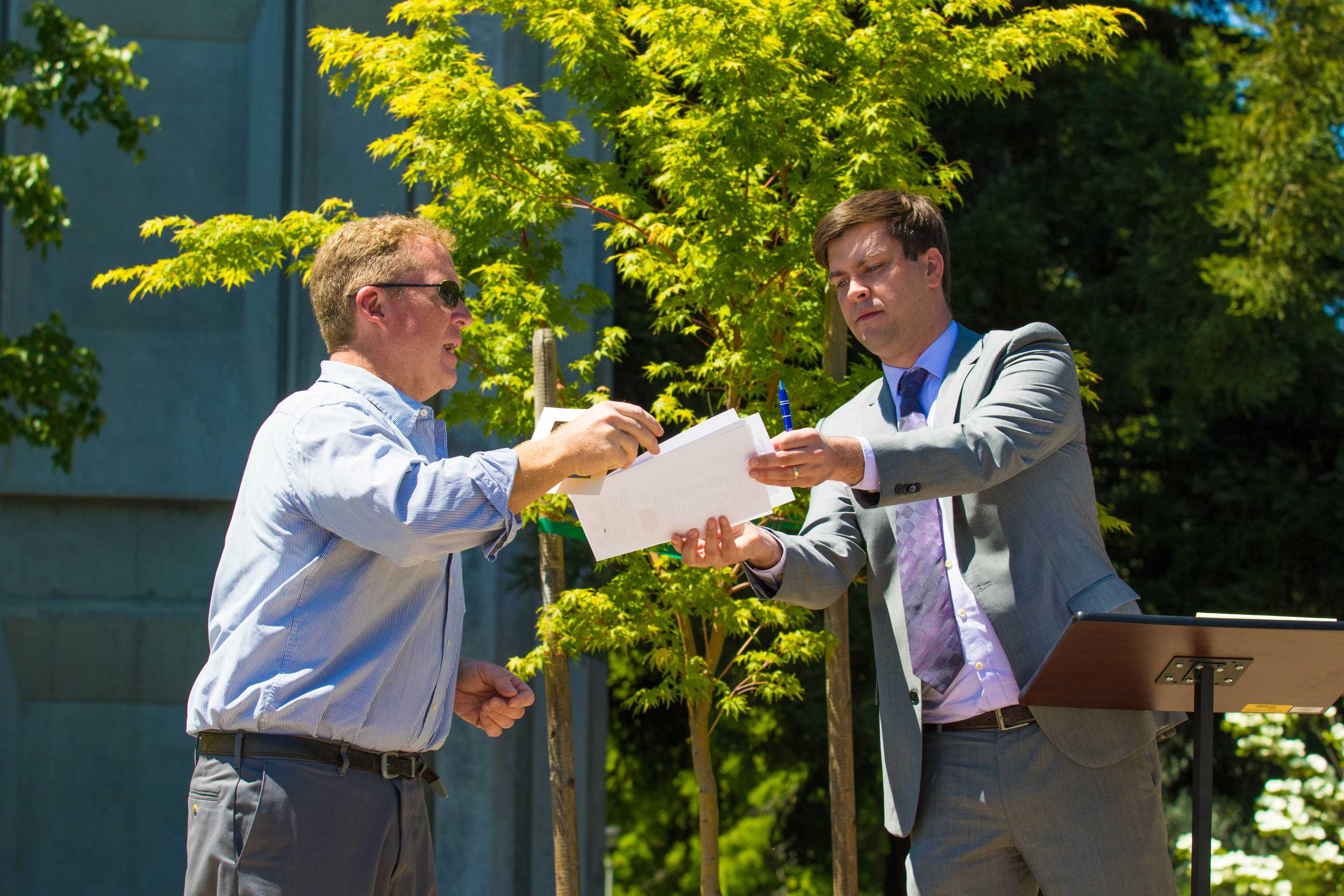Sonoma State University must pay faculty and staff who worked in Stevenson Hall and other buildings a total of $2.9 million in damages for violations of occupational health and safety laws concerning the improper handling of asbestos, a Sonoma County judge has decided.
The judgment, awarded in September by judge Nancy Case Shaffer, is part of a whistleblower lawsuit filed by Thomas Sargent, a university employee who claimed SSU forced him to resign after raising alarms about how the school was handling asbestos at Stevenson Hall and other locations.
Sonoma State STAR
“We are happy about the ruling,” said Gina Voight, chapter president of the CSU employees union at Sonoma State and administrative coordinator of the department of kinesiology. “We hope this will open the door for all 23 campuses to address asbestos problems as well as challenge Cal-OSHA’s outdated standards of what acceptable levels of asbestos are.”
SSU President Judy K. Sakaki has said the university will appeal the decision.
The award is in addition to $387,000 that a jury awarded to Sargent in March after finding both the California State University Board of Trustees and Sargent’s direct supervisor, Craig Dawson, liable. The court awarded Sargent the money for lost income, mental suffering and emotional distress as a result of being forced to leave.
“We hope that the results of this case will prompt the university to change its behavior,” said Dustin Collier, primary lawyer for Sargent. “Mr. Sargent and his attorneys are committed to protecting all of its workers’ with a safe place of employment.”
Under Shaffer’s order, the school will distribute a quarter of the $2.9 million to 232 teachers, administrative assistants and other university employees who worked in Stevenson Hall between May 1, 2013 and March 6, 2015. The amount is about $3,100 each. The remaining three-quarters of the penalties will go to the Labor and Workforce Development Agency and the Occupational Health and Safety Administration .
An appeal will place a hold on the collection and distribution of any penalty awards until after the appeals court resolves it.
The university spent approximately $3.5 million in legal fees to fight the case and take it to trial.
Sargent, an environmental health and safety specialist at Sonoma State, said he noticed unsafe practices starting in 2012, with the treatment of asbestos materials in Stevenson Hall and other buildings, and voiced his concerns to Dawson, his immediate superior.
According to the lawsuit, Sargent, a 24-year employee of SSU, contends faculty retaliated against him and forced him to resign for reporting the unsafe conditions.
“When the trial concluded earlier this year, the jury made factual findings about the number and type of OSHA violations committed by the Sonoma State campus,” said Collier. “However, the jury does not have the power to determine the amount of penalties that are owed. Only a judge can.”
Shaffer awarded Sargent his job back on Sept. 21 ruling. His reinstatement is on hold during the appeal process.
Meanwhile, the Sonoma Chapter of the California Faculty Association had filed a grievance over the asbestos with the university, hired a consultant and worked with OSHA for independent testing.
“We are advocating for the health and safety for faculty, staff and students,” said Elaine Newman, chapter president of CFA at Sonoma State and professor in the mathematics and statistics department.
The test results from OSHA’s independent study said the air in any building did not exceed the legal threshold for asbestos fibers.
In a written statement to its members, the CFA decided late last month to withdraw its grievance because they “don’t believe they can convince an arbitrator that the campus has violated our contract when the test results are in the legal range.”
The statement also cautioned members, saying though the results were within legal range, it does not mean air quality is necessarily safe; only that there haven’t been any findings that the campus had too much asbestos as established by government code.
Sakaki said in a campus-wide email Friday that Stevenson Hall did not pose a safety risk. “It is important for everyone to know that the jury in the case found that Stevenson Hall is a safe and healthful environment,” she said.
According to Sakaki, Sonoma State has been “regularly conducting air monitoring tests in Stevenson and other older buildings,” and have tested more than 100 samples over the past year. All but two showed no detectable asbestos fibers, she said. Of the two samples that did prove positive for fibers, both “were barely over the detection threshold and well within the range that Cal/OSHA considers acceptable,” she said.
“Nothing is more important than the safety of our employees and students,” she said. “If conditions should ever warrant it, the university would take all appropriate steps to abate the hazards and protect the well-being of our students, faculty and staff.”
OSHA’s website says there is a permissible asbestos exposure limit of 0.1 fiber per cubic centimeter for work in all industries. However, that asbestos PEL is a target guideline for regulatory purposes only and does not establish any level of “safe” asbestos exposure.
“The Sonoma State community should be aware that there is a separate lawsuit pending right now,” Collier said. “In that case, we are seeking penalties for the same OSHA violations to the extent they occurred after March 6, 2015 as well as alleging additional OSHA violations that were not known during the Sargent case.”
Collier alleges they have tests that prove the same violations still exist at Sonoma State to this day and that the university continues to allow its faculty and staff to work in unsafe environments, not just at Stevenson Hall but other buildings as well. Some new OSHA violations surround the campus’ electrical grid and electrician training/certification protocols.
Details about how often the university will be testing for asbestos and what maintenance will be done to control the problem were not available.
For questions about specifics, the STAR was directed to Craig Dawson, director of environmental health and safety on campus, who was out of the office last week. Dawson administers the asbestos management plan on campus.





![[Both photos courtesy of sonoma.edu]
Ming-Ting Mike Lee stepped in as the new SSU president following Sakakis resignation in July 2022](https://sonomastatestar.com/wp-content/uploads/2024/04/CC4520AB-22A7-41B2-9F6F-2A2D5F76A28C-1200x1200.jpeg)



























